Disclaimer: This post may contain Amazon affiliate links. Sudachi earns a small percentage from qualifying purchases at no extra cost to you. See disclaimer for more info.
What is Wasabi?
Wasabi is a cruciferous plant native to Japan that grows in clear streams deep in the mountains. The wasabi plant is part of the horseradish family and is often known as “Japanese horseradish”. It’s green in color and has a pungent yet fresh and aromatic taste.
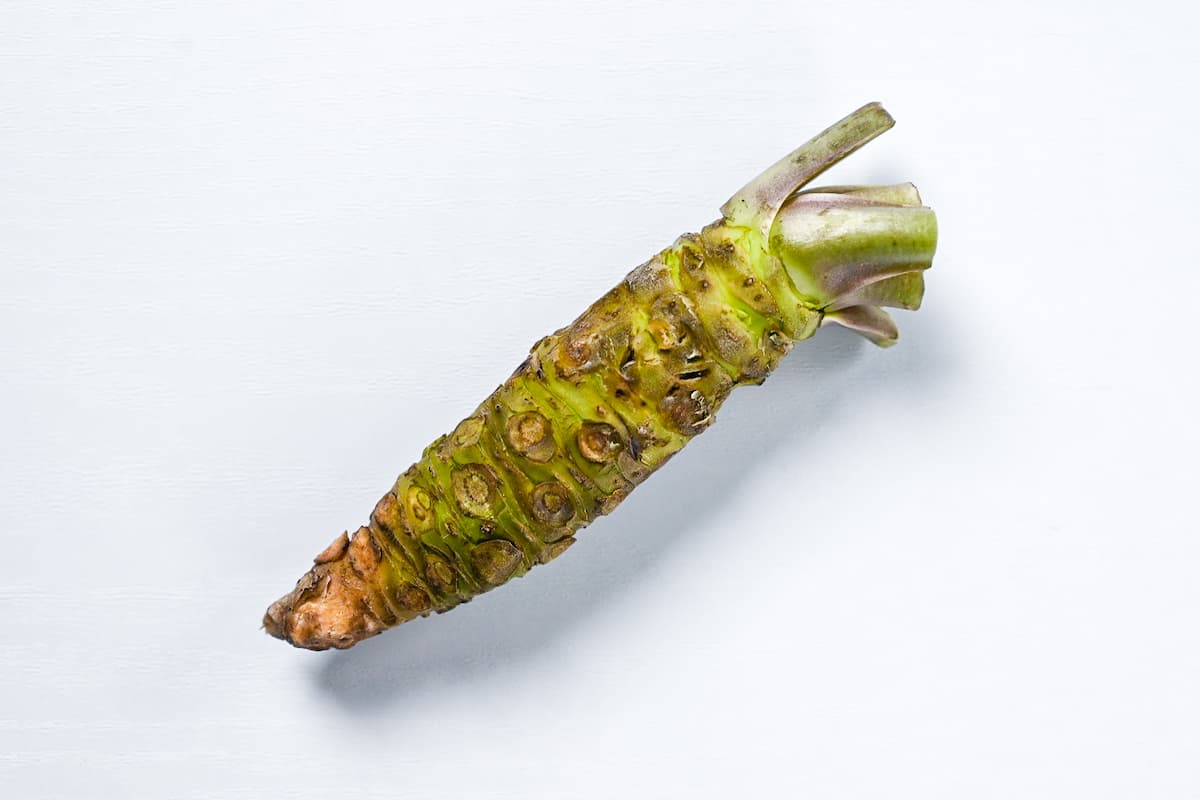
As you know, the wasabi paste is made from the grated rhizome (underground stem) of the wasabi plant. It is an indispensable ingredient in Japanese cuisine and is used with dishes such as sushi, sashimi, and soba noodles.
Where does wasabi grow?
The wasabi plant is native to Japan and only grows under very specific conditions. They tend to grow in rich soil and need to be slightly submerged in running water; this is why the mountains of Japan are so ideal for wild wasabi. Recreating these conditions makes wasabi a pretty expensive plant to produce.
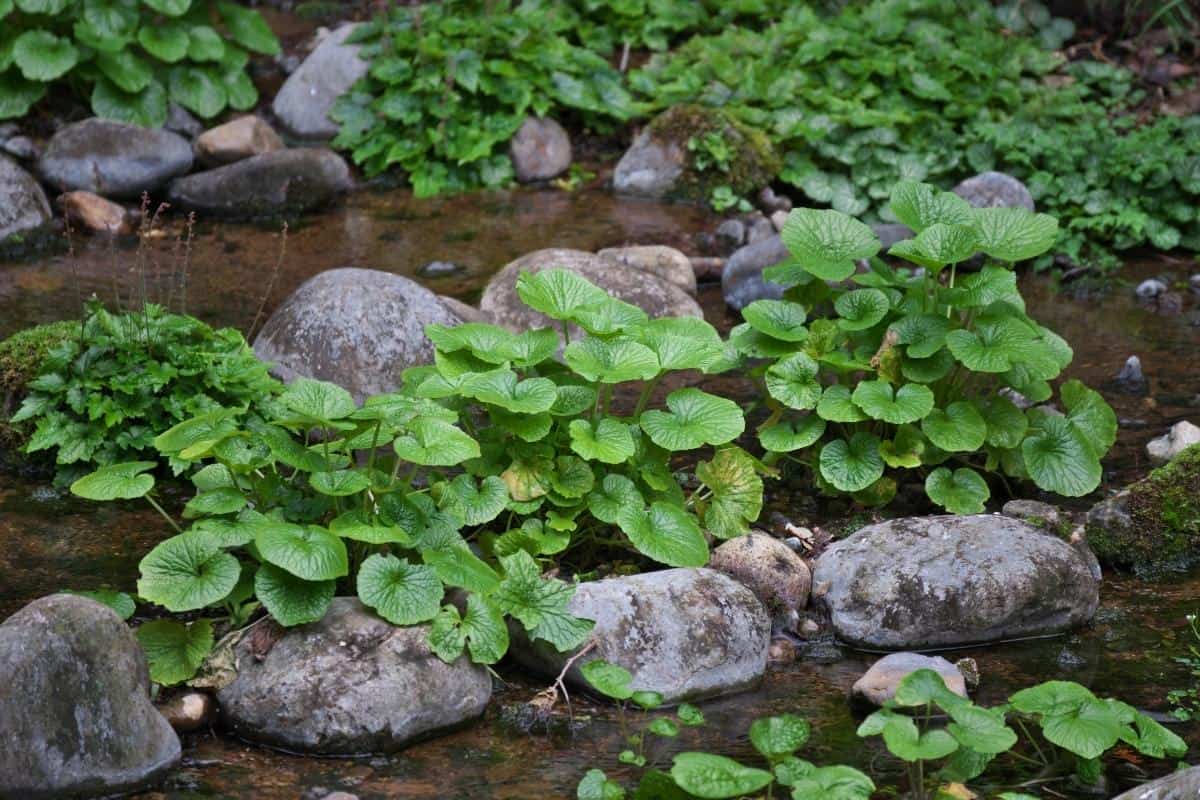
It is said that growing wasabi originated in the early Edo period (1603-1867) when it was transplanted from a native plant in Arihitogi, Shizuoka Prefecture, and started to be cultivated there.
Research has shown that there are considerable differences in the refined taste, aroma, pungency, bitterness, and sweetness of wasabi among the major production areas in Japan. In fact, high-end wasabi is not as spicy as many people think.
Is real wasabi actually spicy?
You might be surprised to know that real wasabi (hon wasabi) is barely spicy at all. The intention of serving fish with wasabi is to compliment and bring out the flavor, not mask it with spiciness. It is also known to help kill bacteria on raw fish.
Most so-called “wasabi” pastes and powders are actually made with the cheaper “seiyo wasabi”, also known as “wasabi daikon” or regular horseradish in English. It’s then mixed with green food coloring and a few other ingredients so that it looks like real wasabi. It is interesting to note that the cheaper the wasabi is, the spicier it tastes.
This spicy fake wasabi is used in restaurants, sold in supermarkets, and is a lot easier to come by than the real deal, but if I’m being honest, I still like it!
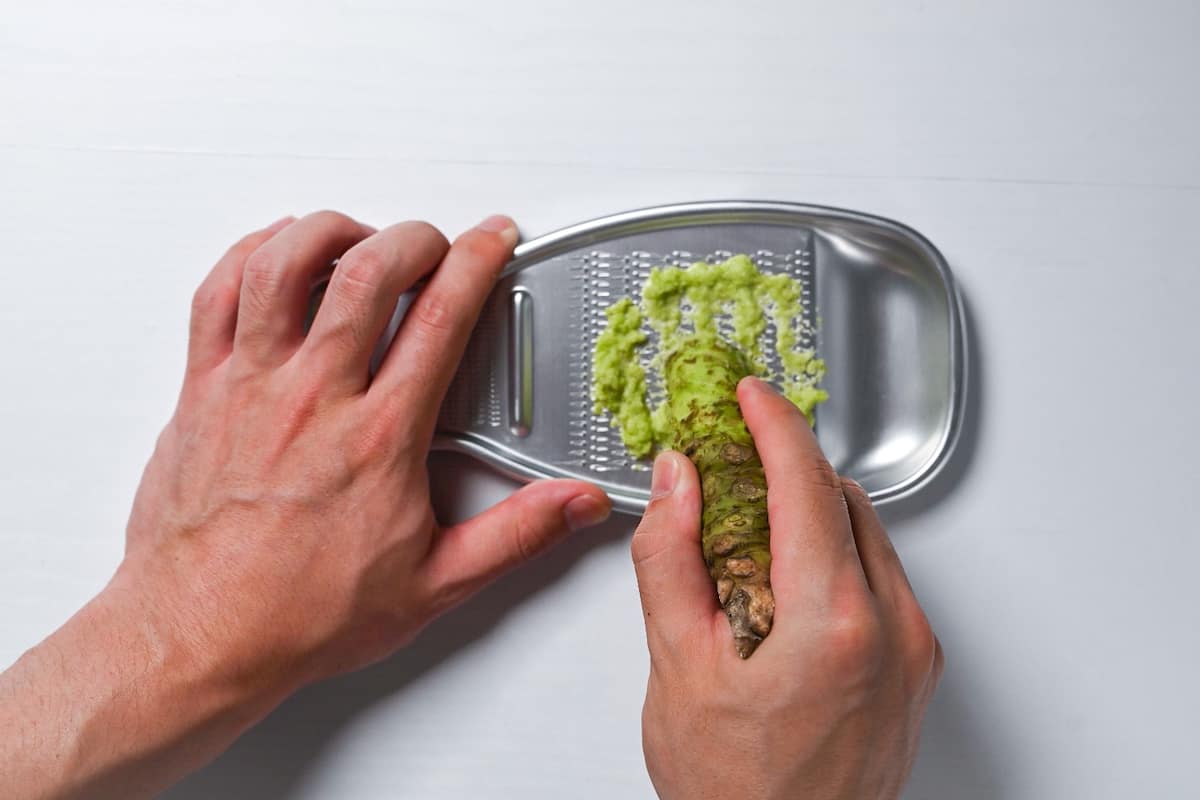
How to Grate Fresh Wasabi Root
Here are my step-by-step instructions for how to grate a wasabi root at home. For ingredient quantities and simplified instructions, scroll down for the printable recipe card below.
Wash the wasabi root first and then pluck the top stems by hand.
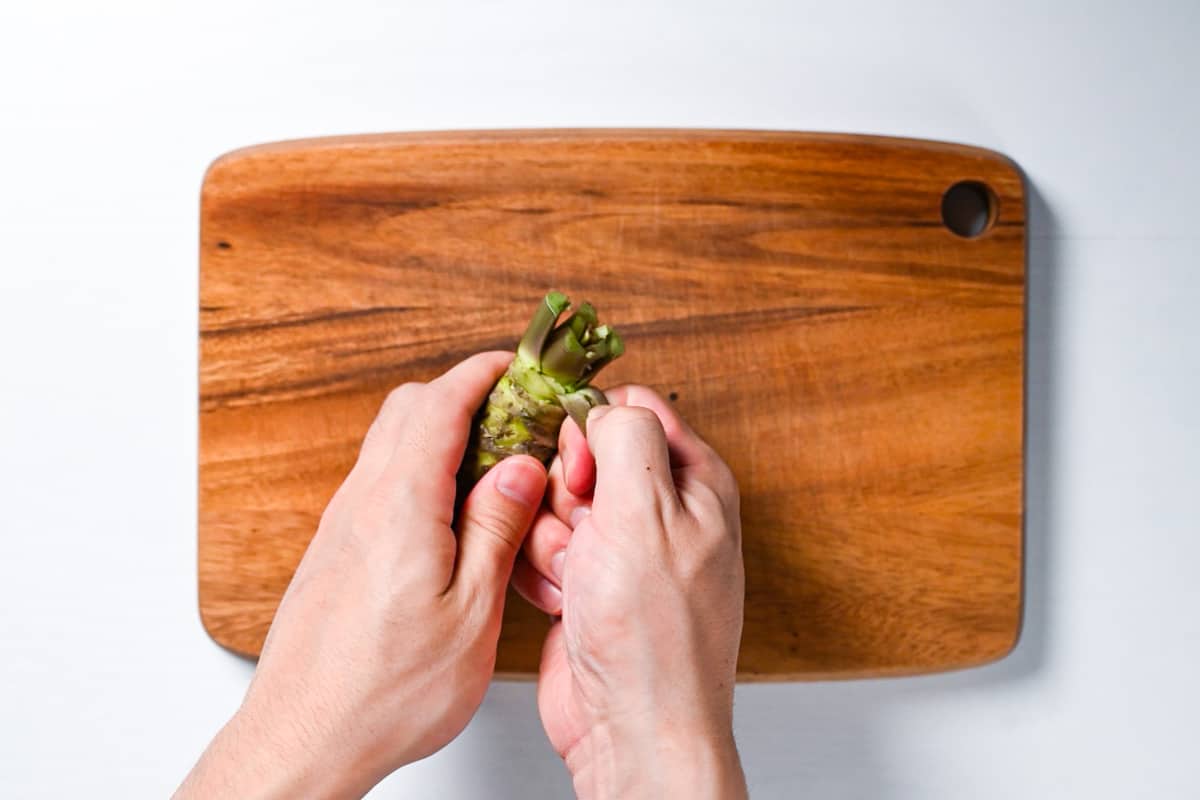
If there are black parts, scrub them with a scrubbing brush or scrape them off with a knife.
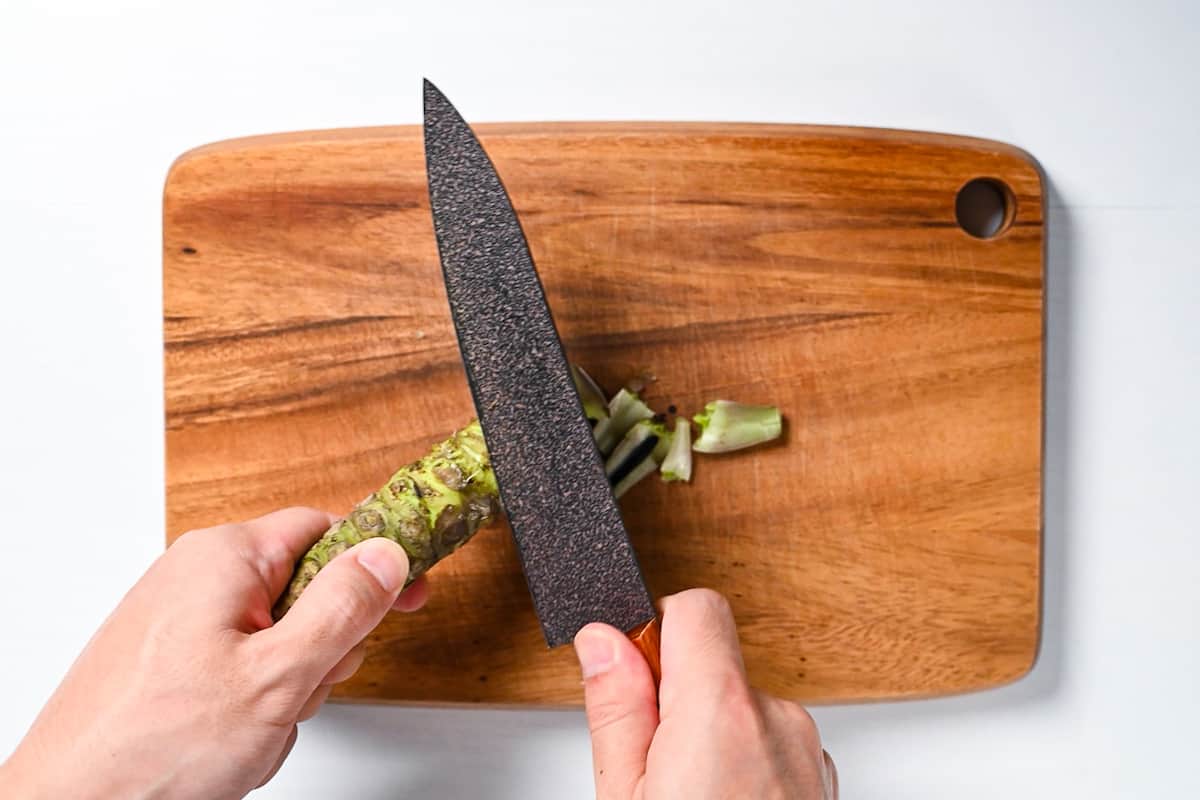
Wasabi’s skin should not be peeled completely because the pungency and flavor comes from the area around the peel.
Grating and breaking down the wasabi cells gives it its pungency and flavor. The most important thing here is to grate slowly and gently in a circular motion.
If you grate it with force, the texture will become coarse, and the pungency and flavor will not be fully extracted.
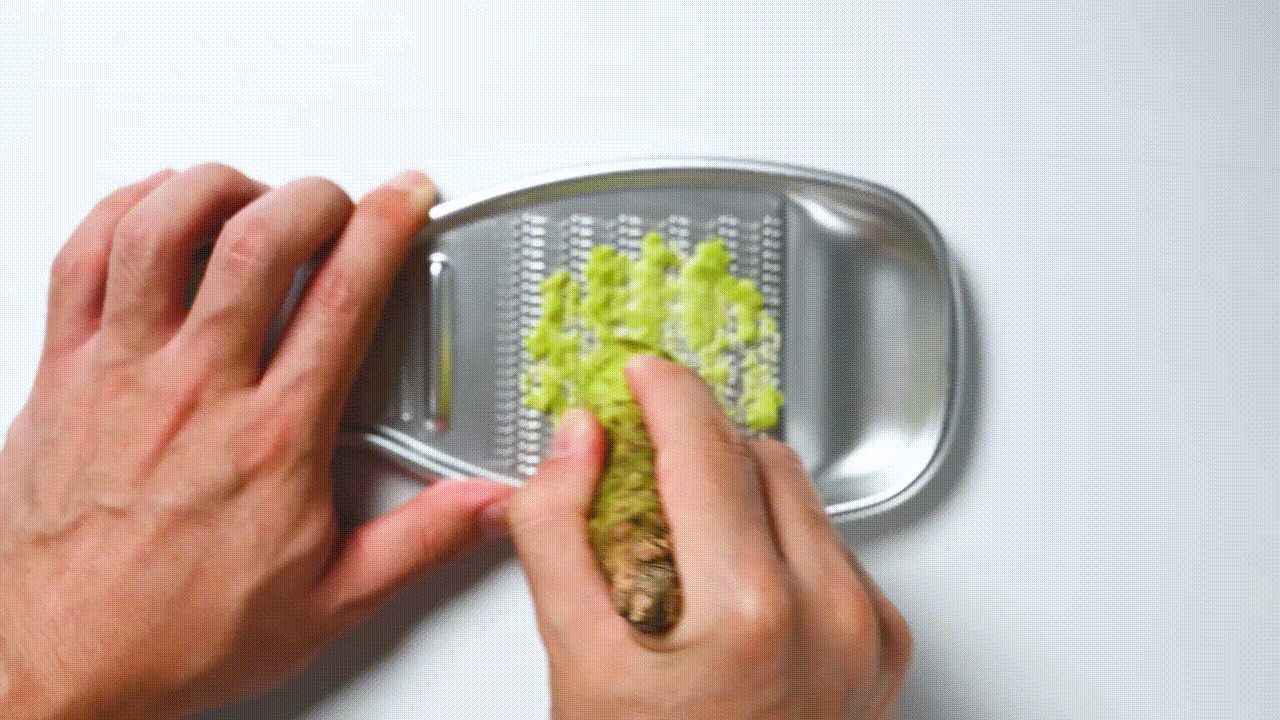
Wasabi tastes slightly different on the stem side versus the tip side. Stem-side wasabi is characterized as beautiful, bright green in color, fragrant, fresh, aromatic, and slightly less pungent. On the other hand, the tip-side wasabi is whitish in color (not as beautiful as the stem) and has a weak aroma, but the pungency is very strong, and the texture is sticky rather than watery. The two in Japanese restaurants are often mixed together and used to adjust the spiciness and aroma.
For a final step, transfer the ground wasabi root to a chopping board and cut it with a sharp knife in a sort of rocking motion. This will help make it extra smooth.
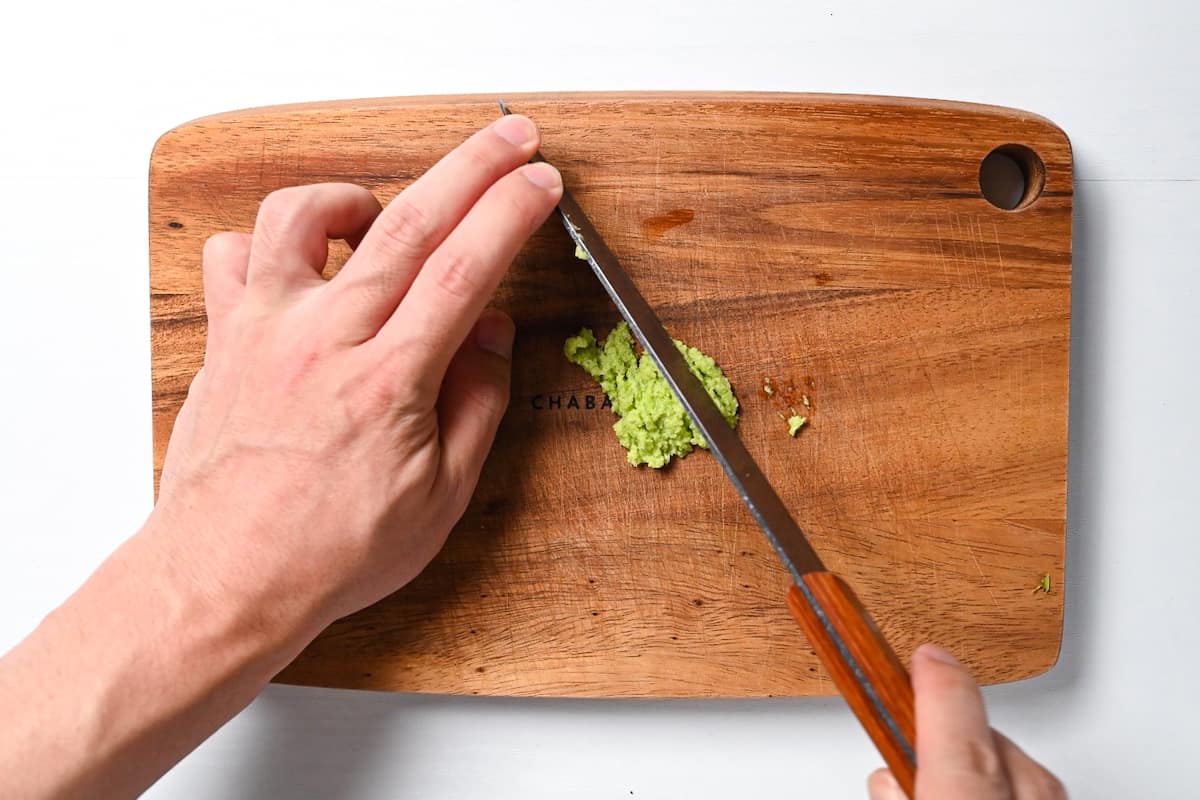
Enjoy your homemade wasabi with raw fish (sashimi), sushi and noodle recipes. You can also use it in dressings or even with roast beef.
Scroll down to see my recipe suggestions!
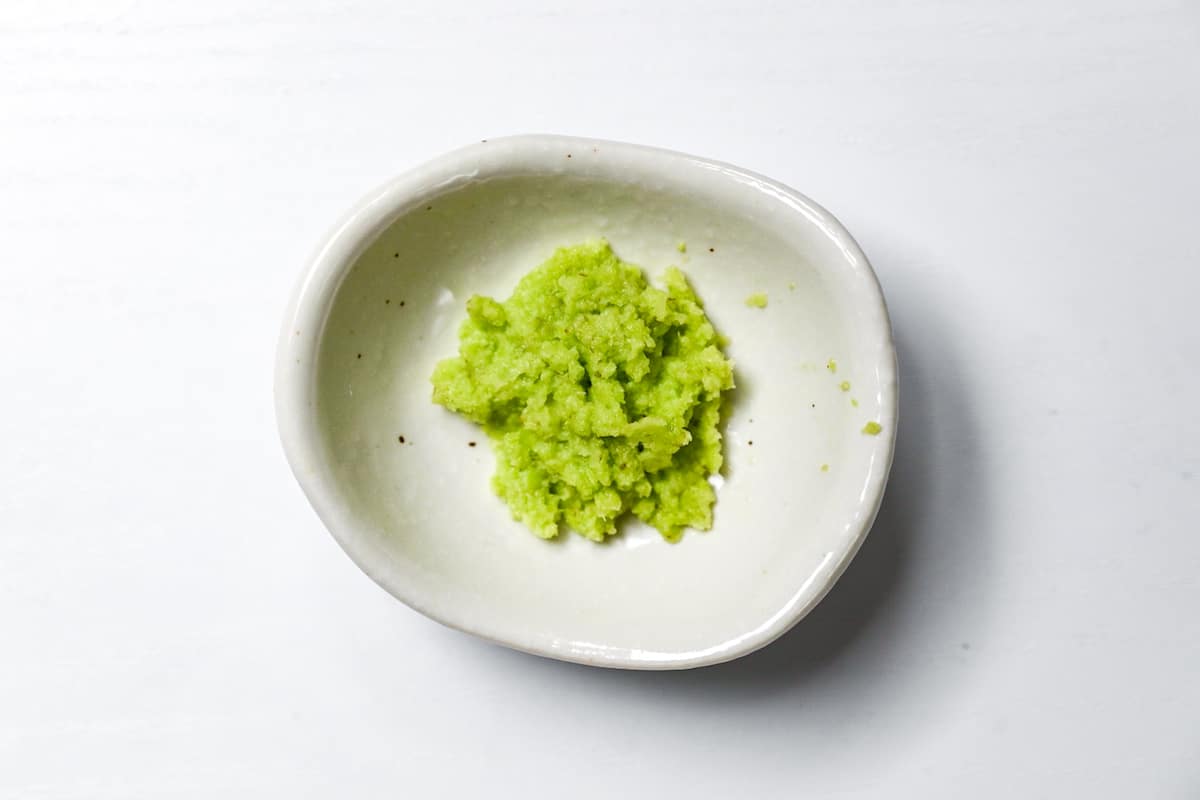
How to Store
Since it is difficult to use up a root of wasabi at once at home, the leftover wasabi should be stored in the refrigerator. However, it is important to store it in its original state and grate it fresh each time you use it.
Wipe the wasabi dry, wrap it in dry kitchen paper, place it in a plastic bag with a zipper, and store it in the refrigerator. Because it tends to dry out easily, check the condition of the wasabi every week or so, and if it is dry, rehydrate it by soaking it in water.
With this method, you can store it up to 2 weeks.
FAQ
Real wasabi is part of the horseradish family, but it is not the same as horseradish itself. Horseradish is a lot spicier and easier to grow. It’s most likely that the wasabi you have eaten is made with horseradish as it’s more common, even within Japan.
Wasabi root is pretty expensive and difficult to find. A few online sellers ship to the US and Europe, so check Google to find your local seller.
If you can’t find wasabi root, I recommend this S&B premium wasabi paste. It’s one of the few wasabi pastes that contain real wasabi (hon wasabi) stated in the ingredients. I can vouch for it because I use this one all the time!
I personally use a general Japanese grater like this, however, the most professional grater for wasabi would be like this one.
Japanese graters are called “oroshigane” or “oroshiki” and differ quite from Western-style graters. They don’t contain holes, just raised spikes that create a finer grind. This is because grated ingredients are used a lot in Japanese cooking, for example, ginger, garlic, and oroshi daikon.
If you cover the spikes with aluminum foil before grating, there will be less wasted wasabi on the grater, and it will be easier to clean too! I’ve never tried grating wasabi root with a Western-style grater (it’s a bit too expensive to try), but I’d assume you can’t get it fine enough, so I wouldn’t recommend it.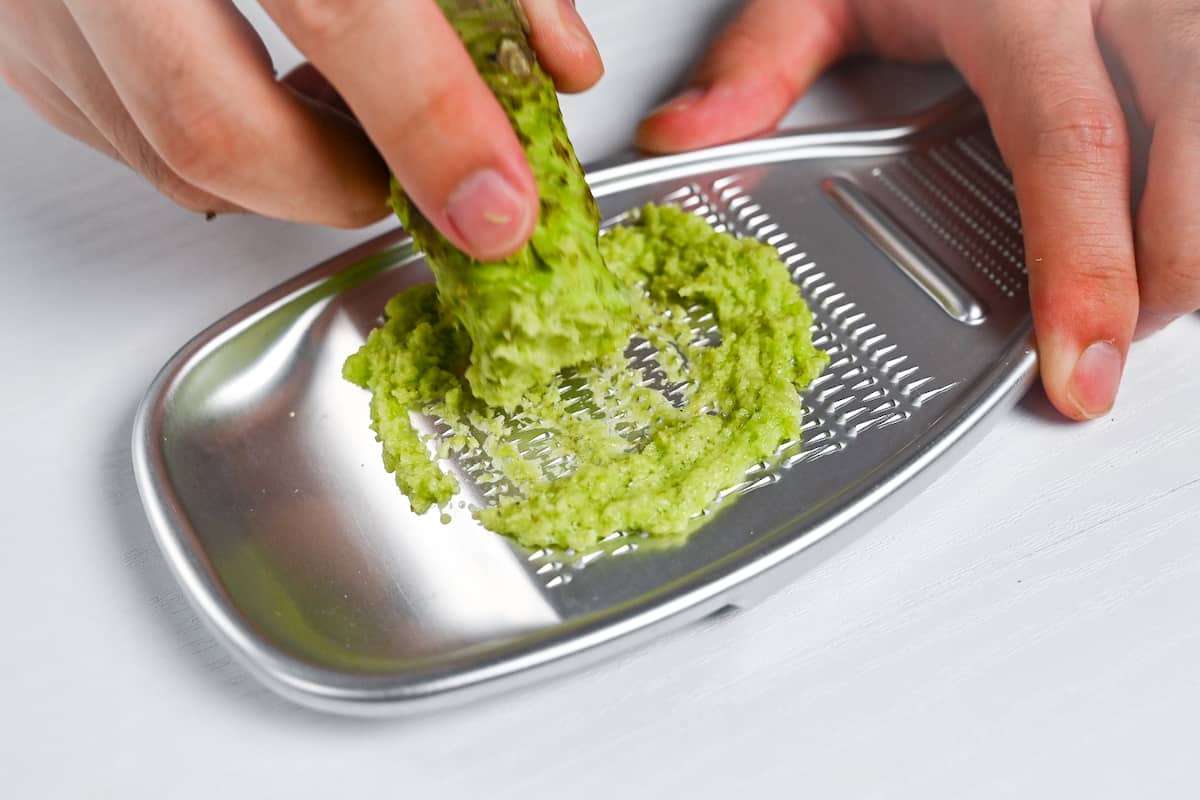
Japanese Recipes That Use Wasabi
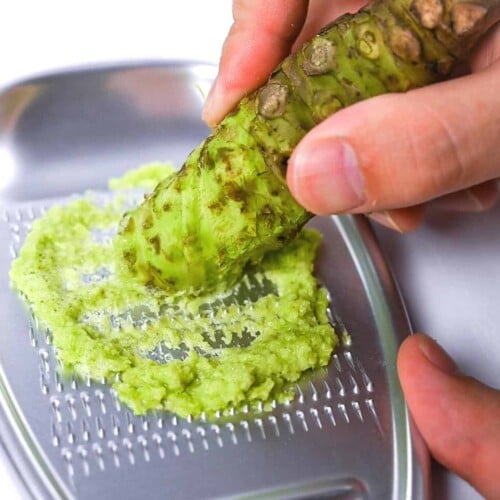
Homemade Wasabi Paste
Equipment
Ingredients
- 1 wasabi root (hon wasabi)
Instructions
- Wash 1 wasabi root under cold running water and gently scrub to remove any dirt. Remove the stems by hand.

- Use a knife to remove any black parts. (Do not peel completely.)

- Grate using a Japanese style grater (oroshiki/oroshigame) by gently pressing the wasabi root over the spikes and moving in a repetitive circular motion. Grate what you need, don’t grate the whole root.

- Transfer to a chopping board.

- Using a sharp knife, cut the wasabi finely using a rocking motion. This will make it smoother and break down any lumps.

- Enjoy with your favourite Japanese sashimi, sushi and noodle dishes!

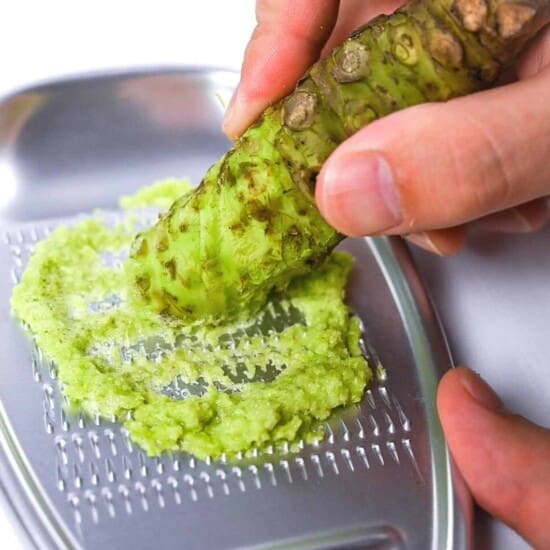


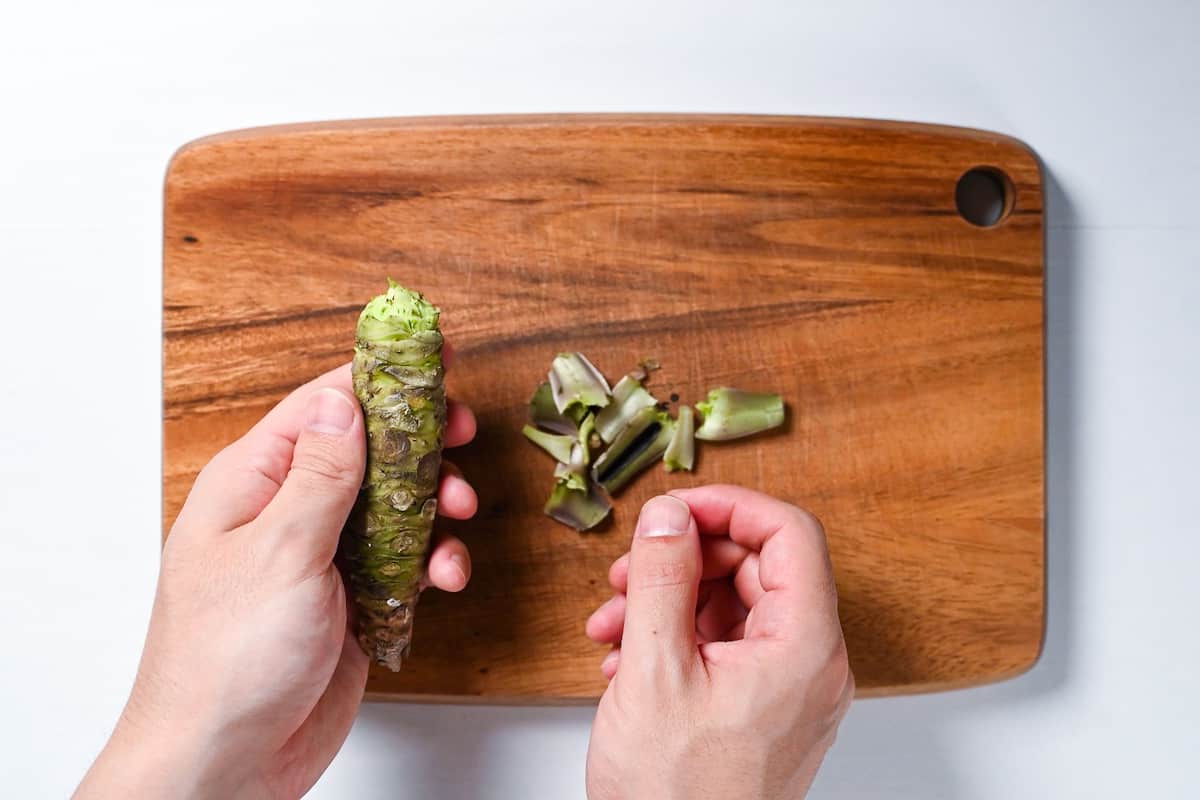
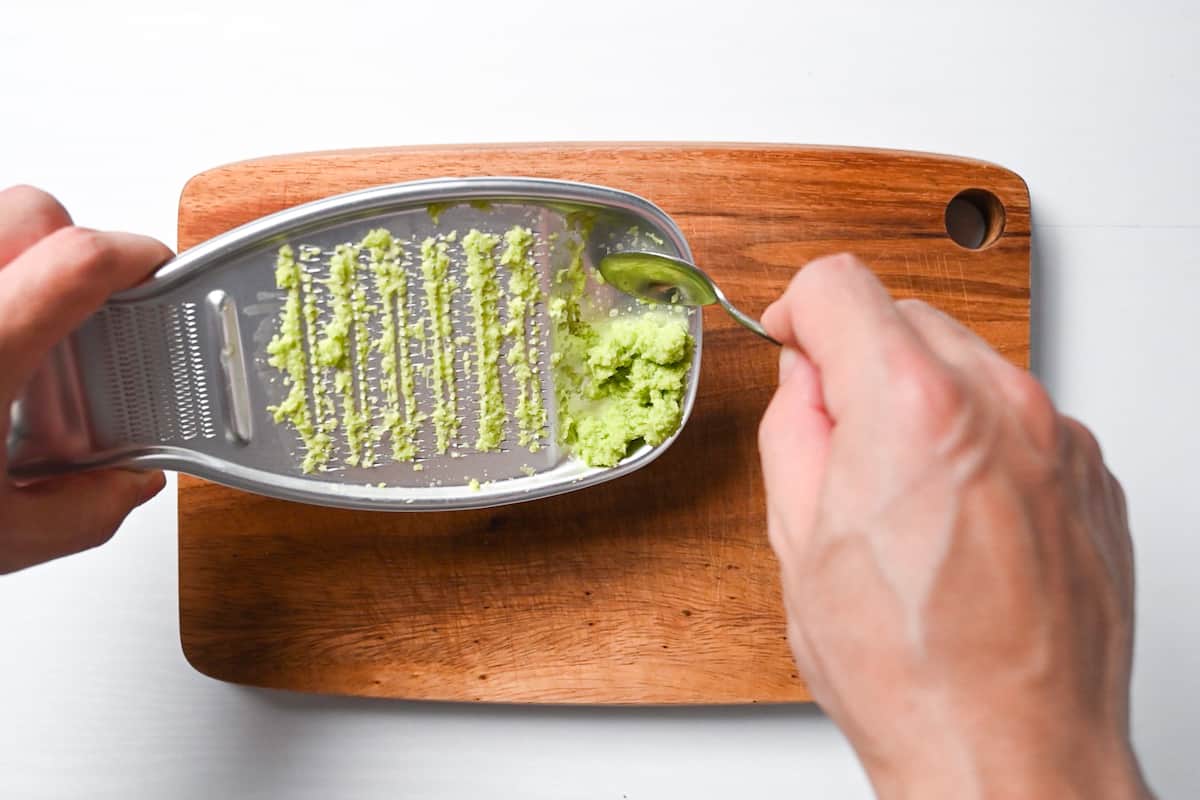
Leave a rating and a comment